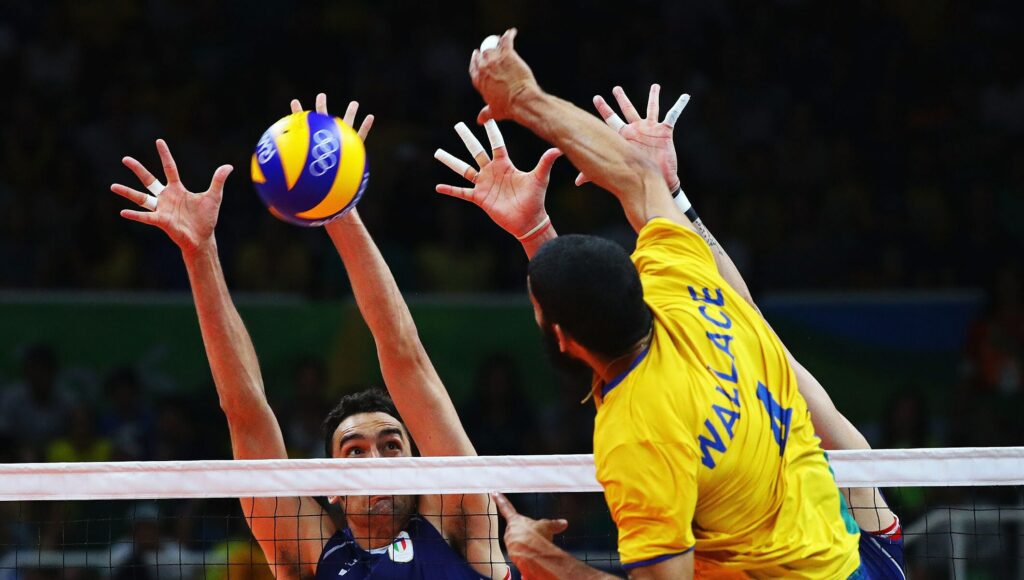What is the Safest Sports? Discover the Low-Risk Activities for Maximum Fun
What is the Safest Sports? The safest sport is swimming, as it has a low risk of injuries and can be enjoyed by people of all ages and fitness levels. Swimming not only provides a full-body workout but also improves cardiovascular health.
Additionally, swimming is a non-weight-bearing exercise, which reduces the stress on joints, making it a safe option for those with joint or back problems. Unlike contact sports, swimming eliminates the risk of collisions and impact injuries. Swimming stands out as one of the safest sports due to its low injury rates, numerous health benefits, and inclusive nature.
So, whether you are a beginner or a seasoned athlete, swimming offers a safe and enjoyable way to stay fit and active.
Understanding The Importance Of Safety In Sports
Safety in sports is of utmost importance, and understanding which sport is the safest can help minimize the risk of injuries. Take the necessary precautions and learn about the sport’s rules and equipment to ensure a safer and enjoyable experience for participants.
The Role Of Safety In Sports
Sports are a great way to stay active, have fun, and improve physical fitness. However, it is crucial to prioritize safety to ensure that participants can enjoy the sport without the risk of serious injuries. Understanding the importance of safety in sports is essential in promoting injury prevention and creating a secure environment for athletes.
Let’s explore the key aspects of safety in sports:
Promoting Injury Prevention:
- Proper gear and equipment: Wearing appropriate gear and equipment significantly reduces the risk of injuries in sports. This includes helmets, knee pads, mouthguards, and protective padding for contact sports.
- Qualified coaching: Well-trained coaches play a vital role in safety. They ensure that athletes are taught the correct techniques, emphasize proper warm-ups and stretching exercises, and guide players on injury prevention strategies.
- Regular maintenance of sports facilities: Inspecting and maintaining sports facilities, including playing fields, courts, and tracks, ensures athletes are not exposed to hazardous conditions that could lead to injuries.
- Adequate rest and recovery: Allowing sufficient time for rest and recovery is crucial to prevent overuse injuries. Balancing intense training with rest helps athletes avoid chronic injuries and burnout.
- Hydration and nutrition: Staying hydrated and fueling the body with proper nutrition helps prevent fatigue, muscle cramps, and other conditions that can contribute to injuries.
Making Sports Safe For All:
- Inclusivity and fair play: Ensuring that sports are accessible to individuals of all ages, abilities, and genders promotes safe and inclusive participation. Encouraging fair play and respect among athletes fosters a safe and supportive environment.
- Age-appropriate activities: Tailoring sports activities to match the age and physical capabilities of participants helps reduce the risk of injuries. Children and adolescents, in particular, require specialized programs designed for their developmental stages.
- Regular safety education: Raising awareness about safety measures and injury prevention among athletes, coaches, and parents helps everyone involved play a role in maintaining a safe sports environment.
By prioritizing safety in sports, we can create a positive experience that allows athletes to thrive, enjoy the game, and minimize the risk of injuries. Whether it’s through proper gear, qualified coaching, or inclusive practices, everyone involved must recognize the significance of safety in sports.
So lace up your shoes, put on your protective gear, and enjoy the thrill of a safe sporting experience!
Factors That Contribute To A Sport’s Safety Level
Sports safety levels are influenced by various factors, such as equipment quality, rule enforcement, and player education. Each sport has its own safety measures, but some, like swimming and track and field, are generally considered safer due to their lower risk of collision and injury.
Sports provide numerous benefits, including physical fitness, teamwork, and personal growth. However, when it comes to participating in sports, it is essential to consider the safety factor. Certain sports tend to be safer than others due to various factors that contribute to their safety level.
Let’s explore these factors to understand how they play a crucial role in ensuring a safe sports experience.
Assessing The Risk Factors In Sports
Assessing the risk factors associated with a particular sport is essential in determining its safety level. These risk factors can include:
- Contact intensity: Some sports have a higher likelihood of player-to-player contact, increasing the chances of injuries. Sports such as football, rugby, and boxing involve significant contact, while non-contact sports like swimming and tennis carry fewer risks.
- Injury potential: Certain sports have a higher potential for severe injuries, such as head trauma or fractures. Sports like skiing, gymnastics, and martial arts often involve elevated injury risks due to a combination of high speeds, flips, and impacts.
- Equipment requirements: The type and quality of equipment used in a sport significantly impact safety. Protective gear, such as helmets, pads, and mouthguards, can minimize injury risks in activities like hockey, American football, and skateboarding.
Understanding these risk factors allows athletes, coaches, and parents to make informed decisions when choosing a sport or adopting preventive measures to ensure a safer sporting experience.
Understanding The Impact Of Equipment On Safety
The equipment used in sports plays a vital role in ensuring the safety of athletes. Here are some points to consider:
- Proper fitting: Well-fitted equipment reduces the risk of injuries by providing adequate protection and support. Helmets, pads, and other gear should fit snugly without being too tight or loose.
- High-quality materials: Equipment made with high-quality materials enhances safety as it withstands the impact of accidents more effectively. Sturdy helmets, durable soccer shin guards, and strong bike helmets are a few examples of equipment made using reliable materials.
- Regular maintenance: Routine inspection and maintenance of sports equipment are crucial. Equipment should be checked for wear and tear, replaced if necessary, and properly maintained to ensure optimal safety.
By understanding the impact of equipment on safety, athletes can make informed decisions when purchasing or using protective gear, reducing the risk of potential injuries.
Assessing the risk factors and understanding the impact of equipment significantly contribute to a sport’s safety level. By considering these factors, athletes, parents, and sports enthusiasts can prioritize their well-being and minimize risks associated with participating in a particular sport.
Remember, safety is paramount, allowing individuals to enjoy sports while minimizing the chances of injuries.
Low-Impact And Low-Risk Sports
Low-impact and low-risk sports are considered the safest options for athletes. These sports typically involve minimal contact and provide a lower chance of injury, making them ideal for individuals looking for a safe and enjoyable physical activity.
Exploring Non-Contact Sports
Non-contact sports provide a safer option for individuals looking to stay active without the risk of high-impact collisions or injuries. Here are a few examples of low-impact and low-risk sports that can be enjoyed by people of all ages and fitness levels:
- Swimming and water-based activities: Dive into the world of water sports, such as swimming, diving, and synchronized swimming. These activities offer a refreshing way to exercise while minimizing the stress on your joints. The buoyancy of water also reduces the risk of impact-related injuries.
- Gymnastics and flexibility-based sports: If you’re drawn to grace and flexibility, gymnastics and related sports like rhythmic gymnastics or trampolining can be excellent choices. These activities focus on developing strength, balance, and body control, all while minimizing the risk of contact with opponents.
Low-Impact Sports For Joint Health
Taking care of your joints is crucial, especially as you age. Consider these low-impact sports that promote joint health and overall well-being:
- Cycling and bike riding: Hop on a bicycle and enjoy the outdoors while giving your joints a break. Cycling is a low-impact activity that helps strengthen muscles, improve cardiovascular fitness, and reduce the strain on weight-bearing joints.
- Yoga and Pilates: Embrace the mind-body connection with yoga and Pilates. These activities focus on improving flexibility, core strength, and balance. The slow and controlled movements reduce the risk of injury while providing a gentle challenge for your body.
Remember, engaging in sports should always be accompanied by proper warm-up exercises and ongoing precautions to ensure your safety. Maintain a balanced approach and consult with a healthcare professional or trainer before starting any new sport or exercise routine. So, stay active, have fun, and prioritize your well-being by exploring these low-impact and low-risk sports.

Credit: www.miracle-recreation.com
Team Sports With Low Risk Of Injuries
Discover the safest team sports to engage in, with a low risk of injuries. Explore options like swimming, volleyball, and basketball, which promote physical activity without compromising safety. Find the perfect sport that combines fun and well-being for all players.
Soccer And Its Low-Risk Aspects
- Soccer is a popular team sport that comes with several low-risk aspects for players:
- Controlled contact: Though physical contact is a part of soccer, it is regulated to ensure player safety. Body-to-body challenges and tackles are allowed as long as they are within the rules of the game.
- Protective gear: Minimal gear requirements, such as shin guards and cleats, keep players safe without hindering their movement.
- Field dimensions: The vast size of soccer fields provides ample space for players to maneuver without the risk of collisions.
- Non-contact areas: Certain areas on the soccer field, such as goalkeepers’ boxes and free-kick walls, are marked as non-contact zones to reduce the chances of injury.
Volleyball And Injury Prevention Techniques

- Volleyball is a low-risk team sport that emphasizes skill and coordination. Here are some key injury prevention techniques in volleyball:
- Proper technique: Volleyball players are trained to use the correct technique for serving, hitting, and blocking to minimize the risk of overuse injuries.
- Conditioning and strength training: Regular conditioning and strength training exercises help enhance the stability of joints and muscles, reducing the likelihood of sprains and strains.
- Volleyball-specific warm-up: Dynamic stretching and specific warm-up drills before games or practices can help prepare the body for the physical demands of volleyball.
- Communication: Effective communication between teammates prevents collisions during plays and reduces the risk of potential injuries.
- Protective equipment: Volleyball players may choose to wear kneepads for extra protection when diving or sliding on the court.
Basketball And Safe Playing Strategies

- Basketball is an exciting team sport that can be played with reduced risk of injuries by implementing safe strategies:
- Proper warm-up: A thorough warm-up routine, including dynamic stretching and cardiovascular exercises, ensures that players are physically prepared for the game.
- Court awareness: Developing situational awareness and understanding of the court dimensions can help players anticipate movements and avoid collisions.
- Controlled aggression: Encouraging controlled aggression allows players to assert themselves without resorting to reckless or dangerous actions during the game.
- Appropriate footwear: Wearing basketball shoes with proper ankle support and sufficient traction helps prevent ankle sprains and other lower limb injuries.
- Balanced training: Incorporating strength, agility, and balance exercises into training regimens helps improve overall stability and reduces the risk of falls and injuries.
Remember, active participation in any sport comes with inherent risks, and it’s important to prioritize safety by following rules, maintaining good sportsmanship, and seeking proper coaching and guidance. Enjoying team sports with low injury risk is not only fun but also provides an opportunity to stay fit and build strong relationships with teammates.
Individual Sports With Minimal Risk
Looking for a safe sport to try? Individual sports with minimal risk are a great option. These sports prioritize personal safety and include activities like swimming, cycling, and yoga. Stay active while minimizing the chances of injury.
When it comes to choosing a safe sport to participate in, individual sports with minimal risk are a popular choice. These sports not only provide a great way to stay active and improve physical fitness but also come with a lower risk of injuries compared to contact or high-impact sports.
In this section, we will explore three individual sports, namely archery, golf, and tennis, and the safety measures and injury prevention tips associated with them.
Archery And Its Safety Measures
Archery is a sport that requires precision and focus. While it may appear to be a low-risk activity, proper safety measures should always be followed to ensure a safe experience. Here are some key safety measures to keep in mind when participating in archery:
- Always use proper archery equipment, including a well-maintained bow and arrows suitable for your skill level.
- Prioritize wearing the necessary protective gear, such as an armguard, finger tab or glove, and a chest protector if desired.
- Ensure that the archery range is clear and that there is sufficient distance between participants.
- Follow the range rules and guidelines provided by the archery facility or instructor.
- Never aim or shoot an arrow in the direction of another person.
- Always inspect your equipment for any faults or damages before shooting.
Golf And Essential Precautions
Golf is a sport enjoyed by people of all ages and skill levels. While it may not seem physically demanding, injuries can occur if proper precautions are not taken. Here are some essential precautions to consider when playing golf:
- Warm up and stretch before starting a game to loosen muscles and prevent strains.
- Invest in proper golf clubs that fit your size and swing style to avoid unnecessary strain on your body.
- Always be aware of your surroundings and other players on the course, ensuring you give them ample space to play their shots.
- Use sunscreen and wear a hat to protect yourself from extended exposure to the sun.
- Stay hydrated throughout the game, especially during hot weather conditions.
- Practice proper swing techniques to minimize the risk of strains or injuries to your back, shoulders, or wrists.
- Be cautious when walking on uneven terrain or when entering and exiting bunkers.
Tennis And Injury Prevention Tips
Tennis is a fast-paced and physically demanding sport that requires agility, coordination, and quick reflexes. While injuries can occur, following these injury prevention tips can help minimize the risks when playing tennis:
- Always warm up and stretch before playing to prepare your muscles for the demands of the game.
- Invest in proper tennis footwear that provides good support and traction on the court.
- Use the appropriate racket size and grip that matches your skill level and playing style.
- Practice proper techniques to reduce the strain on your joints, especially your knees and elbows.
- Be mindful of proper footwork and body positioning to avoid twisting or spraining your ankles.
- Take regular breaks and stay hydrated to prevent muscle cramps or fatigue.
- Listen to your body and avoid overexertion or playing through pain.
By following safety measures and injury prevention tips specific to each sport, individuals can enjoy the benefits of these individual sports while minimizing the risk of injuries. Whether you choose archery, golf, or tennis, remember to have fun and stay safe on your sporting journey.
Sports Safety Tips For Participants
Sports safety is crucial for participants. While there is no definitive “safest” sport, it is important to follow safety guidelines and wear appropriate protective gear to minimize the risk of injuries during any sporting activity.
Participating in sports is a great way to stay active and healthy, but it’s important to prioritize safety. Whether you’re a seasoned athlete or just starting out, taking precautions can help prevent injuries and ensure an enjoyable experience. In this section, we’ll explore some essential safety tips every participant should keep in mind while engaging in sports activities.
Warm-Up Exercises And Stretching Routines:
- Prioritize warm-up exercises: Before diving headfirst into your chosen sport, take the time to warm up your body. This helps to increase blood flow to your muscles, making them more flexible and less prone to injury.
- Include dynamic stretching: Dynamic stretches, such as arm circles and leg swings, are a great way to warm up the muscles and improve the range of motion. These movements should mimic the actions you’ll be performing during the sport.
- Incorporate static stretching: After your warm-up, static stretching can be effective in improving muscle flexibility and reducing the risk of strains. Hold each stretch for 15 to 30 seconds, focusing on the major muscle groups you’ll be using.
Importance Of Proper Gear And Equipment:
- Wear the right footwear: Different sports require specific athletic shoes to provide the appropriate support and stability. Invest in proper footwear that fits well and matches the demands of your sport.
- Use protective equipment: Depending on the sport, protective gear like helmets, knee pads, and mouthguards can significantly reduce the risk of serious injury. Don’t underestimate the importance of using the right equipment for your chosen sport.
- Check your gear regularly: Inspect your equipment, such as helmets, padding, and sports gear, for any signs of wear and tear. Replace damaged or outdated gear to ensure optimal protection during your sports activities.
Maintaining Hydration And Nutrition:
- Stay hydrated: Proper hydration is crucial for optimal athletic performance and overall well-being. Make sure to drink fluids before, during, and after sports activities. Water is often the best choice, but electrolyte-rich sports drinks can be beneficial for more intense activities.
- Fuel your body: A balanced diet with the right mix of carbohydrates, protein, and healthy fats is essential for physical endurance and recovery. Include nutrient-rich foods like fruits, vegetables, whole grains, and lean proteins in your diet to support your sports performance.
- Plan your meals and snacks: Prioritize regular meals and snacks that provide sustained energy throughout the day. Consider incorporating pre- and post-workout snacks to fuel your body before physical activity and aid in muscle recovery afterward.
Remember, by following these sports safety tips, you can significantly reduce the risk of injuries and ensure a fun and enjoyable experience while participating in sports. Stay safe, stay active, and enjoy the benefits of a healthy lifestyle.
Frequently Asked Questions Of What Is The Safest Sport
What Is The Safest Sport For Adults?
Sports like swimming, cycling, and yoga are considered safe for adults, minimizing the risk of injury.
Is There A Sport That Is Safe For Kids?
Sports such as basketball, soccer, and tennis promote safety for kids by teaching teamwork and coordination skills.
Which Sport Carries The Lowest Risk Of Concussions?
Sports like swimming, track and field, and gymnastics have a low risk of concussions due to limited contact and impact.
Conclusion
In the quest for a safe sport, it is vital to consider various factors before making a choice. While no sport is entirely risk-free, some sports stand out for their focus on safety. By prioritizing protective gear, rule enforcement, and regular training, certain sports like swimming, tennis, and golf offer a relatively safe environment for participants.
These sports minimize the risk of serious injuries and provide opportunities for people of all ages and abilities to participate. It is essential to remember that safety also depends on individual caution and adherence to rules. Engaging in any sport should be accompanied by proper warm-ups, maintaining one’s physical fitness, and receiving guidance from experts.
Ultimately, the safest sport is the one that aligns with your interests, abilities, and safety precautions. So, embrace your favorite sport, take the necessary precautions, and enjoy the benefits of physical activity while minimizing the risks.



